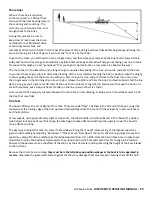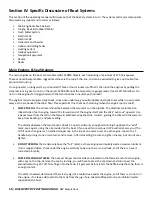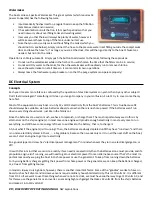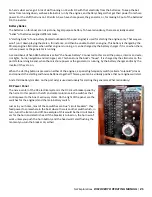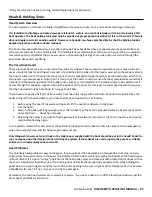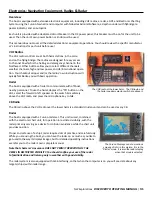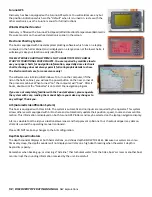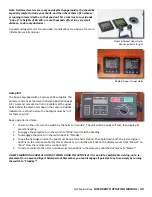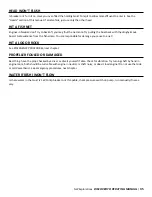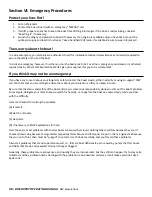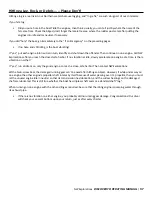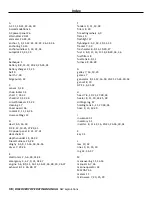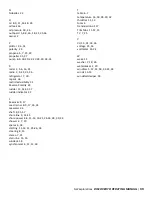
NW Explorations
DISCOVERY OPERATING MANUAL
|
29
Galley Equipment
The galley is fitted with a number of appliances for your convenience. Most of these (like the microwave) are easy to op-
erate, “just like a home appliance”; nevertheless, we will spend some time discussing the propane stove, as it is a marine
unit that does have some features that are slightly different than a home model.
Propane Stove
The boat is equipped with a PRINCESS propane stove with three top burners and a thermostatically-controlled oven and
broiler.
Propane gas is heavier-than-air. Therefore it must be treated with care around a boat so that we can be absolutely sure
there is no gas escaping into the atmosphere to collect in the boat’s lowest spot, the enclosed bilges, to become an
explosive safety hazard. For this reason, the propane tank itself is housed above the galley in the left seat on the flying
bridge. Obviously. Up there, if there is a leak, the gas will simply be vented overboard, for there is no way from there for
it to be redirected into the boat, for all openings into the salon are sealed (otherwise they’d leak in a rainstorm!).
There is, of course, a manual gas valve on the propane tank. This valve is used only when exchanging/filling tanks. There
is also a second valve, a “solenoid valve”, in the flybridge seat propane line immediately after the manual valve. This elec-
tric valve is controlled by a switch in the galley itself, and in this way the cook can actually shut off the propane supply to
the stove at its source when it not being used, simply by throwing the switch.
In addition, each stove burner including the oven is fitted with a “thermocouple”, a heat- sensing device that also con-
trols the gas flow. When the gas supply is “turned on” to a burner, the gas will not flow unless (a) the burner is already
on, or (b) the cook is holding the valve in the “light” position. So you can see the safety of this arrangement: If the burner
goes out for any reason, the thermocouple will shut off the fuel automatically, assuring you of a safe galley.
To Light a Burner:
Lighting a burner is easy and only takes five to ten seconds:
1. Be sure the propane valve circuit breaker in the DC panel is on.
2. Turn on the remote propane valve on the fly bridge by throwing the over-the- stove “Propane” switch (when you
do this, the pilot light on the switch panel will light, and you will see the red area on the switch).
3. Turn the knob for your selected burner to “light”, holding it in, and press the red igniter button on the left of
the stove several times until the burner lights. Sometimes you may need to turn the knob a little further toward
“high”, or, if the tank has been changed, keep trying for a few seconds before fuel reaches the stove after purging
air from the pipe.
4. After the burner lights, continue to hold the knob in for a few seconds while the thermocouple heats up before
adjusting the flame to the desired intensity.
To Light the Oven:
Since the oven burner is out of sight when the door is closed and it is on, and since while in use, the flame, controlled by
the oven thermostat, goes on and off to control the temperature accurately, the oven has a pilot light that lights it when
in use. Therefore the cook must “light the pilot” when the stove’s oven is to be used. Also, by not leaving the pilot light
on all the time since the oven isn’t used at every meal, the boat’s propane is conserved.
Just as with the burners, lighting the oven is easy, and will take about 20 seconds:
1. Follow steps (1) and (2) above turning on the circuit breaker and propane switch.
2. Locate the pilot light assembly in the opening under the oven divider, at the right front of the burner assembly.
3. Turn the oven control to “light”, and, while holding the red “oven light” button on the right side of the range, use
a match or butane fire-lighter to light the pilot light, holding the red button in for another fifteen seconds after
the pilot is lit for the thermocouple to heat up and allow the pilot to stay on. If the pilot will not stay lit, hold the
button in longer!
4. Adjust the thermostat to the desired temperature.

